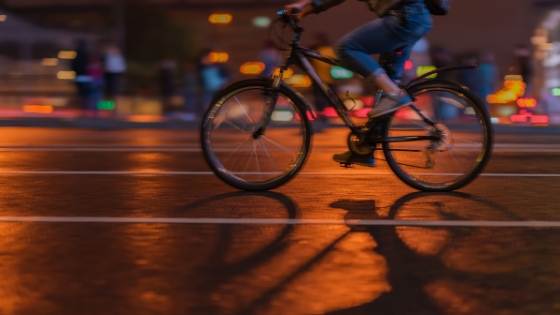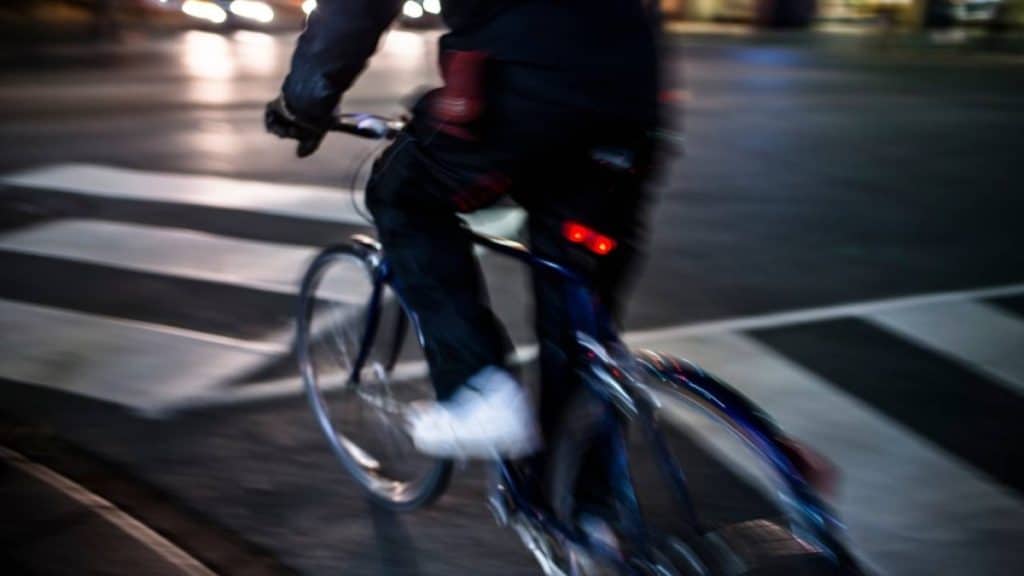
Nighttime bike riding or cycling when it’s dark can be risky, but if you understand the dangers and put safety procedures in place, you shouldn’t have any problems. I cycle my bike to and from work, and throughout winter, the majority of my ride is in the dark. I never leave home or work without suitable safety equipment, and I always inform my wife when I leave.
Riding a bike is perfectly safe in the dark, as long as you have suitable lights fitted to the front and rear of your bike. 100 to 200-lumen lights are recommended in well-lit areas. You might need to increase visibility if you’re cycling through unlit areas. A higher lumen count between 200 to 600 lumens is ideal for most bikes.
In fact cycling with lights is mandatory in many countries from October to February after the hours of 5pm. When cycling at night, car drivers have less chance of noticing you because the contrast between your clothing and the road so being highly visible is essential.
Before you jump on the bike and begin your journey in the dark, I have included some helpful tips and information to keep you or your family safe during the hours of darkness.
Table of Contents
Cycling a Bike in the Dark is it OK?

Cycling at night has an increased risk according to healthessentials, but you can legally cycle a bike at night or when it is dark. However, you must have the correct safety equipment, lights and always plan your route. Inform a family member or friend and set check-in points along your journey to reduce the likelihood of an accident.
When riding during the day, you can estimate distances better than when it’s dark. For that reason, collisions are more likely to occur, especially with turning cars or crossing pedestrians. This is especially true for cyclists without proper lighting equipment. In general, cycling at night is not recommended for beginners unless it’s too dangerous to do so during the day (e.g. between trucks and buses).
How to Stay Safe Riding a Bike at Night
Firstly, you need to be seen by other road users. This means having the correct lights fitted to your bike and wearing reflective and/or hi-vis clothing. The law requires that you have a white front light and a red rear light, both of which must be visible from a distance of 100m. You should also have a rear reflector fitted under your seat.
Secondly, you need to see where you’re going. This means having a good set of lights fitted to your bike. The front light should be a white or yellow light that illuminates the road ahead of you, while the rear light should be a red light that makes you visible to traffic behind you. You might also want to consider a headlight that can be used in low-light conditions.
Thirdly, you need to be aware of your surroundings at all times. This means being extra cautious when riding near parked cars or through narrow alleyways. Pay close attention to the traffic around you, and always yield to pedestrians.
Finally, make sure you let someone know your route before you set off. This way, if something happens, they will be able to find you. Cycling at night is perfectly safe as long as you take the necessary precautions. By following these tips, you can ensure that you or your family stays safe while enjoying the freedom of cycling.
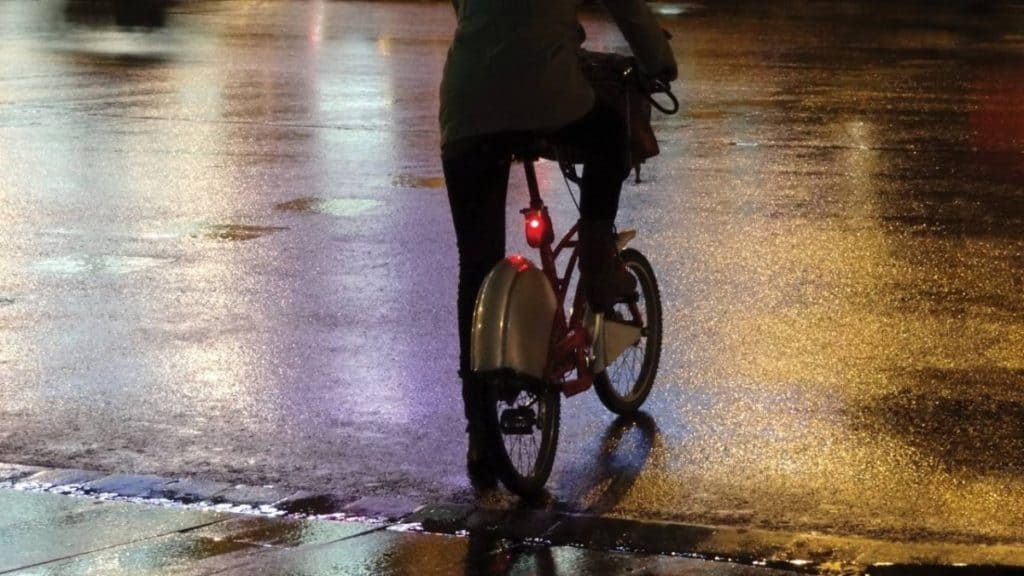
Can I Cycle On A Road At Night Without Lights?
It is illegal to ride on a road without lights after sunset and before sunrise in many Countries and States but it’s not mandatory to have lights on a cycle paths or off-road. You could be fined up to £2,500 for riding without lights on the road. You must apply to the highway code if you are cycling on the road. You must have a white light at the front of your bike and a red light at the rear. You are require to wear high visibility clothing with reflective strips and a helmet.
You should not ride on the pavement unless you are a pedestrian and dismounting from your bike. You can be prosecuted for riding on the pavement/sidewalk. The maximum fine is £500. It is safer to cycle during the day as you can see better and be seen more easily by drivers. However, if you do need to cycle at night, make sure you take extra care and follow the advice above.
[amazon box=”B08TZQLLBB” Title=”Best Bike Lights (8000 High Lumen)” description=”✅Wide Angle decent flood/spot combo beam 5 LEDs.✅Super bright 2000 lumens max output shines 650 yards, and lasts 4 hours on the brightest mode.✅Handlebar Headlight with digital display.”]
Do I Need A Rear Light If I Have A Reflector?
Yes, you should have a rear light even if you have a reflector. This is because a reflector only works when it is hit by light, such as from a car’s headlights. A rear light is always on, so it is much more effective at making you visible to traffic behind you. A 200 lumen red light is recommended as a minimum. If your looking for some cheap reflector click here.
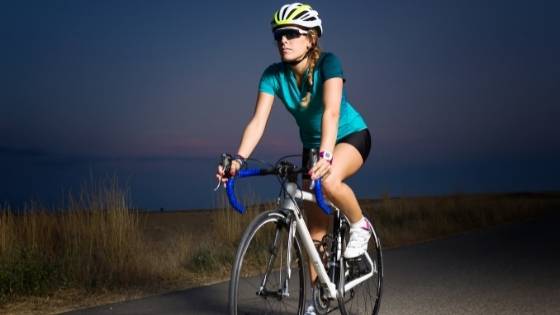
Riding a Bike at Night Without Lights
If you ride a bike at night, you’re legally required to have lights on the bike. If you are riding on or near the roadway you need a white coloured light at the front and red at the rear. Off-road riding doesn’t legally require the bike to be fitted with a light, but these areas don’t have the best lighting so I would advise you light up.
A lumens is a unit of how bright the light is to the human eye. A moderate lumens for a rear red light will range from 5 – 100 lumens. A front white light can range from 10 – 6000 lumens. I personally ride my bike on the road, and I have 100 lumens red light and a 2000 lumens front light.
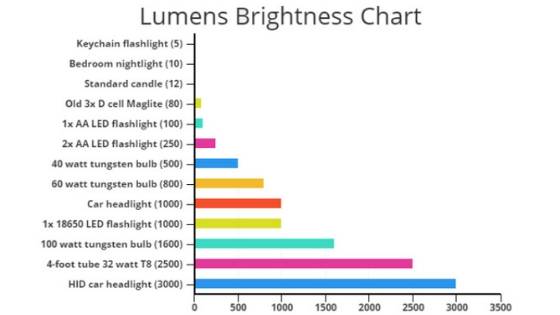
Check The Batteries
The more power your light produces will depend on how the lights are charged. The majority of lights will be charged with a USB point. If your light provides thousands of lumens, it will come with a fitted changing unit that will be attracted to the frame of your bike. Always make sure your lights are fully charged or have significant power to get you to your destination.
Helmet Torch
A helmet lamp is not necessary, but If you ride in heavy traffic, I would recommend one. The helmet lamp moved when your head shifts and if a driver hasn’t seen you if you look in their direction, it’s likely your helmet light will catch their eye. Beware if you don’t fit the helmet lamp correctly It can become a hazard if you fall off your bike. The helmet lamp could weaken the helmet and put your head at risk.
Here’s the exact head torch I use that fits around my helmet and is super bright, Amazon link. A head torch can be really helpful if you get a flat tire and need to replace it especially when it dark or your in a very unlit place.
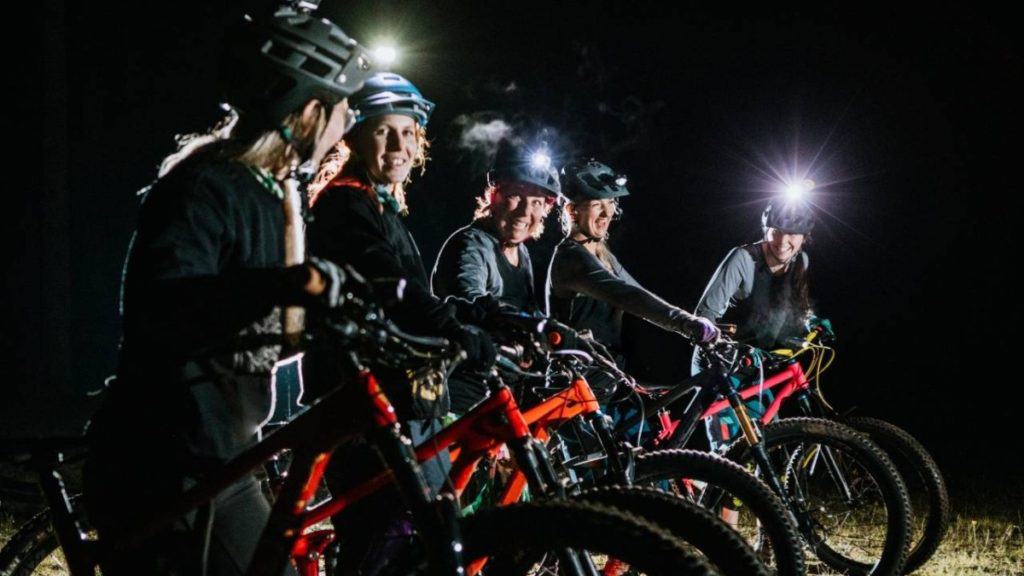
How To Stay Safe Cycling At Night
Before you even get outside on your bike make sure that your bike is roadworthy – check over the brakes, tyres, lights and bell. The last thing you want is one of these things to stop working half way through your ride it can make it dangerous and you might have to call for assistance if the issue can’t be sorted at the side of the road.
Wear High Visibility Clothes And Reflection Strips
I always wear bright-coloured tops with reflective strips when cycling at night. The bright colours you wear will make it easier for drivers and pedestrians to see you in the distance. Yellow, orange, green and pink are vibrant colours the eye should pick up.
Reflective strips allow vehicle lights to highlight you when you are on the road. I put a reflective piece around my ankle, the rear of my helmet and on my backpack. If you don’t have a backpack, make sure you have a reflective strip on your jacket or top.
Let Someone Know You’re Out Cycling At Night
I always inform my wife when I’m out on my bike at night and always send her a text at the half waypoint. I never leave without my smartphone, and I turn on my tracker so I can be located. You are vulnerable when you’re out riding your bike at night, and if a driver knocks you off your bike, there isn’t always a guarantee they will stop.
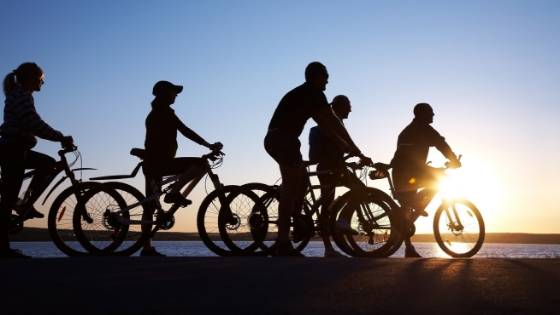
Ride With A Cycle Buddy Or Group
If you’re travelling home or to work, you might find a colleague rides in a similar direction to you. You could cycle some of the way together, increasing your visibility to other road users and reducing the risk of an accident happening.
There is plenty of cycling group that you can find in your area that you can join. The group will ride a couple of nights a week, and it will provide a considerable amount of safety and confidence at night. There will be expected riders in the group that can teach you the safety point of riding at night.
Plan Your Bike Route
Plan a ride on roads you know and have ridden before because you can get easily disoriented in the dark. You could ride miles on the wrong road before you realise you’re lost. Additionally, if you know the road, you will anticipate holes in roads, junctions and other obstacles better because you know the route.
5 Reasons To Cycle Your Bike At Night
My advice would be to ride your bike in the hours of daylight, but I appreciate this isn’t always possible. I have included some examples of when and why you may need to ride your bike at night.
1. Cycling To Work
I would guess cycling to work would be the main reason why you might need to cycle at night or in the dark. Cycling allows me to continue increasing my fitness levels and supports my weight to a healthy level. When the dark evenings draw in, I don’t want to give up this valuable fitness time, so I continue to ride my bike all year round. It’s an environmentally better choice than driving or using public transport, and it can be cost-effective once you have the exact gear.
2. Have A Longer Rides
The best thing about cycling is you can ride for miles into areas where you wouldn’t regularly visit. Sometime you might want to push a little further or head towards a new place. Time might get away from you, and the dark begins to draw nearer. You discover on the journey home it becomes dark and your now cycling in the dark. This has happened to me on several occasion, but before I set off, I always make sure I have the gear for these in case moments.
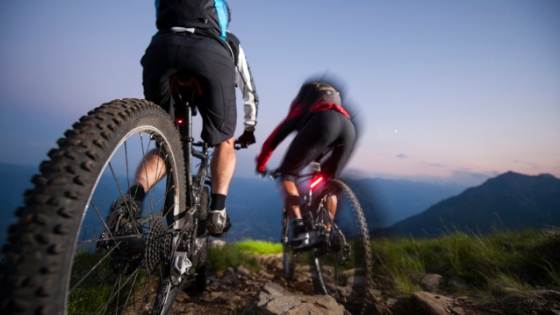
3. It Can Make The Ride Exciting And Different
If you ride along the same roads or route, it can become incredibly boring after a while. Riding at night can make the road feel different and will add excitement to your ride. I often switch off when riding the usual routes around my area, but there’s an added depth and excitement at night that makes me ride faster and harder.
4. The Roads Are Quieter
We don’t all feel confident riding our bikes during the day when other people can see us. The streets are a lot quieter from traffic and pedestrians, which gives you the confidence to get out and ride your bike. Cycle tracks and pathways can be great places to cycle during the night but beware they arent well lite.
5. It’s The Only Free Time You Have
We are not all fortunate enough to work in cycling distance from our homes. You get home from work and the only time you have available to get on your bike and get some hours on the saddle is at night. I have friends that have a tight schedule, and the only time during the working week to cycle is at night.
